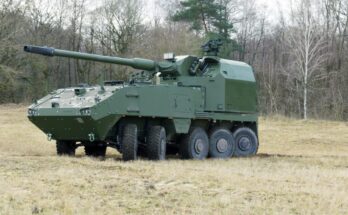
The U.S. Air Force is seeking information on potential replacements for its E-3 Airborne Warning and Control System aircraft, and a contract could come as early as FY23, according to a request for information released this week. The solicitation asks if contractors could deliver at least two prototype aircraft within five years of a contract award. The RFI is for research purposes and does not commit the Air Force to issuing a request for proposals.
The AWACS fleet is used to keep track of aircraft and provide command and control for U.S. and allied forces in the air. The aircraft date back to the 1970s and have become increasingly difficult to maintain.
Last year, the Pacific Air Forces commander told reporters he wanted the Air Force to rapidly procure E-7 Wedgetails to replace the E-3 fleet, but service officials have been hesitant to commit to that approach. However, in October the Air Force awarded a contract for Boeing to conduct studies on the E-7. The latest RFI doesn’t lock the Air Force into either way forward, as the service could be preparing to launch a competition or simply doing additional research before deciding on the E-7. Of course the service could run into resistance from Congress if it tries to replace the E-3 without holding a formal competition. Saab has said it would offer the GlobalEye if a competition is launched.
There are also questions about how the E-3’s current mission will fit into the Air Force’s Advanced Battle Management System (ABMS), which is a distributed approach of linking together various sensors and aircraft to provide battlespace awareness and command and control capabilities. At one point, the service was planning to replace its E-8C Joint Surveillance and Target Attack System (JSTARS) fleet with a new aircraft. The E-8C provides battlespace intelligence similar to the E-3, but the E-8C tracks ground targets instead of airborne ones. The Air Force determined that a replacement aircraft would be too rich a target for enemy forces in a near-peer conflict. The service subsequently decided to use ABMS to replace the JSTARS fleet.
Those same concerns apply to an E-3 replacement, and ABMS was originally envisioned as a solution for replacing the E-3. But the service is also interested in a quick fix due to ongoing maintenance struggles with the AWACS fleet. It’s possible a dedicated E-3 replacement could serve as an interim solution until ABMS is more fleshed out, or simply become part of a much broader ABMS network.
The U.S. represents the largest defense market in the world, and the dynamic budget environment in Washington makes tracking every dollar count. Forecast Internationals’ International Military Markets – North America provides critical analysis of political, economic, and budgetary uncertainties that could impact military acquisition programs in the United States, Canada, Mexico, Central America, and the Caribbean. Includes detailed overviews of defense spending trends, ongoing military programs, future requirements, and the force structures of each country. Click here to learn more.
Shaun's deep-rooted interest in military equipment continues in his role as a senior defense analyst with a focus on the United States. He played an integral role in the development of Forecast International's U.S. Defense Budget Forecast, an interactive online product that tracks Pentagon acquisition programs throughout the congressional budget process. As editor of International Military Markets – North America, Shaun has cultivated a deep understanding of the vast defense markets in the United States and Canada. He is a regular contributor to Forecast International's Defense & Security Monitor blog and has co-authored white papers on global defense spending and various military programs.




